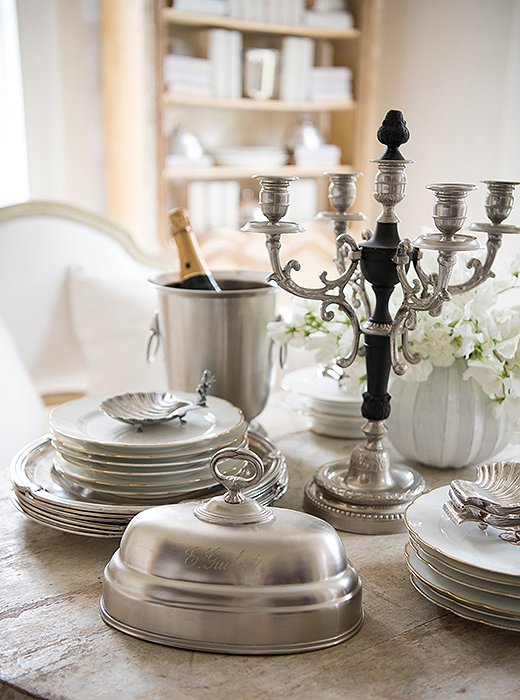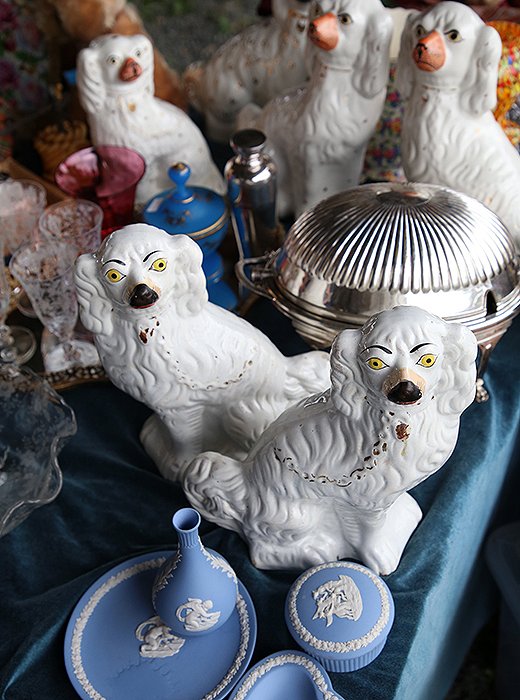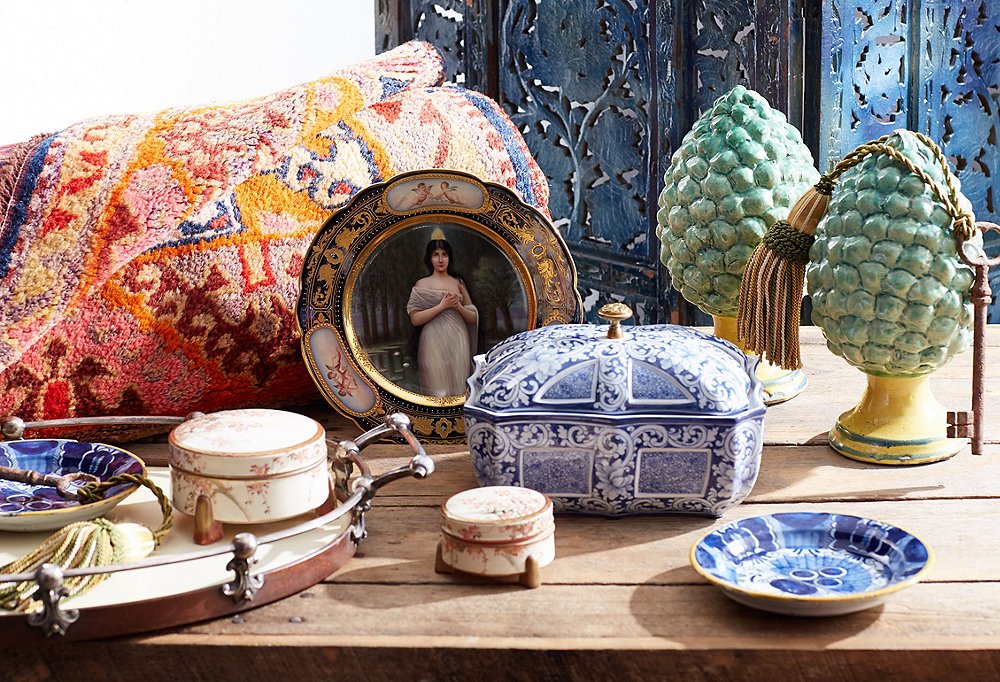Hunting for antiques is a thrilling experience that can be near-on addicting. But for the uninitiated, it may seem a little daunting. How do you know what to look for? What is considered a good deal? What’s the value of these items? To tackle these questions and more, we put together a handy little guide that dives deep into some of the most collectible—and valuable—pieces on the market.

Antique silver is highly collectible. Check out our vintage silver collection here.
Thrill of the Hunt
Before you set out on the open road, or visit the vintage section of onekingslane.com, there are a few things you should know:
Know your style. This might seem like a no-brainer, but it’s important to keep your style in mind when lost in the haze of antiques hunting. Just because a chair is $10 and hugely collectible doesn’t mean you should purchase it. If you don’t know how to describe your style, check out our style guide here.
Know the dealer. The only way to be confident that you’re getting an authentic piece is to vet the dealer or shop through a retailer (such as One Kings Lane) that does it for you. Particularly valuable pieces should come with a provenance (a record of who previously owned a piece) or a certificate of authentication.
Know the symbols. If a provenance or certificate of authentication isn’t available, check for any maker’s marks. Many makers will leave specific logos, stamps, or signifiers on their pieces. A keen shopper will watch for those and know when they’re real or close copies. This is especially helpful when determining the authenticity and even age of silver. The Antiques Trade Gazette has a handy reference list here.
Know your price. If you’re purchasing your collectible at an antiques market, you’ll likely get the chance to bargain with the dealer. It’s best to come armed with accurate prices and your budget in mind. One of our favorite vintage dealers, Bob Richter, talks more about this in his book. A key rule: Don’t insult the dealer with a lowball offer. The better the relationship, the better the deal.
Prized Possessions
Now that you know what to look for, let’s talk about what to collect. Below our vintage team has outlined some of the most collectible pieces on the market. Study up and then start shopping!
Wedgwood: Wedgwood dates back to 1759, when Josiah Wedgwood, an English potter, opened a shop in Staffordshire, England. Wedgwood invented jasperware, and Wedgwood blue is a recognizable color among the ranks of Tiffany blue or Yves Klein blue. Collectors love to find rarer shades of the iconic line, coveting pinks, greens, and blacks the most. Shop Wedgwood →
Hermès scarves: Hermès scarves are small works of art typically made of silk with hand-rolled edges. Worn around the neck or framed on the wall, these pieces epitomize chic. Shop Hermès scarves →
Staffordshire dogs: No Victorian mantel was complete without a pair of Staffordshire pottery canines. Produced in the iconic pottery capitol of England, these spaniels were often modeled after Queen Victoria’s pup. They come in a variety of shades and colorations. Shop Staffordshire dogs →

Wedgwood and Staffordshire dogs are both products of England’s iconic pottery region in Staffordshire.
Majolica: Invented during the Renaissance and reaching peak popularity during the Victorian era, majolica often offers a sort of whimsy not often found in pieces with centuries of provenance. You can read our deep dive into collecting majolica here for even more tips on building your collection. Shop majolica →
Luxury fashion pieces: Many luxury fashion accessories can be hard to obtain; that’s why collectors love shopping vintage. For example, the waiting list for a new Hermès Birkin bag is months, if not years, long, and it has to be ordered in an Hermès shop. Shopping vintage or second-hand lets you cut the line. What’s more, vintage jewelry, watches, handbags, and other accessories generally retain their value thanks to the gemstones, metals, and other materials used, regardless of who made them. Shop luxury fashion →

Join the Discussion